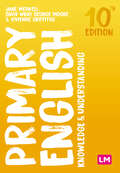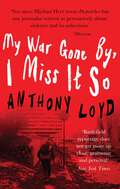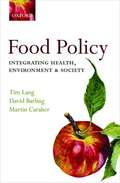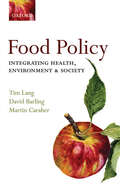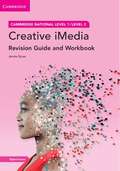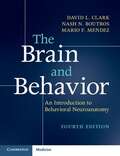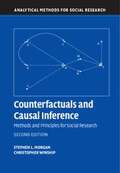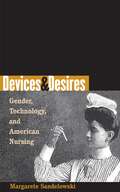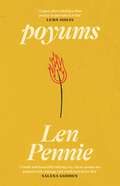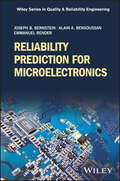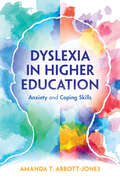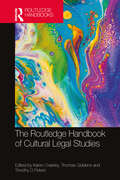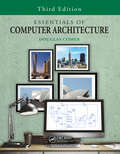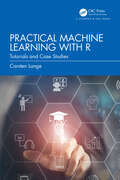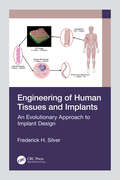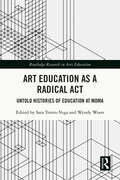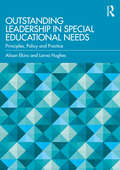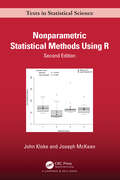- Table View
- List View
Primary English: Knowledge and Understanding (Achieving QTS Series)
by Jane A Medwell David Wray George E Moore Vivienne GriffithsThe essential subject knowledge text for primary English. Secure subject knowledge and understanding is the foundation of confident, creative and effective teaching. The trainee teacher′s guide to all the subject knowledge required to teach primary English. Includes practical and reflective tasks to help deepen your understanding and self assessment tests to check your knowledge and identify areas where more study is needed. This 10th edition has been updated throughout and is now linked to the ITT Core Content Framework.
My War Gone By, I Miss It So
by Anthony Loyd'Undoubtedly the most powerful and immediate book to emerge from the Balkan horror of ethnic civil war' Antony Beevor, Daily TelegraphIn 1993, Anthony Loyd hitchhiked to the Balkans hoping to become a journalist. Leaving behind him the legends of a distinguished military family, he wanted to see 'a real war' for himself. In Bosnia he found one. The cruelty and chaos of the conflict both appalled and embraced him; the adrenalin lure of the action perhaps the loudest siren call of all. In the midst of the daily life-and-death struggle among Bosnia's Serbs, Croats and Muslims, Loyd was inspired by the extraordinary human fortitude he discovered. But returning home he found the void of peacetime too painful to bear, and so began a longstanding personal battle with drug abuse. This harrowing account shows humanity at its worst and best. It is a breathtaking feat of reportage; an uncompromising look at the terrifyingly seductive power of war. 'As good as reporting gets. I have nowhere read a more vivid account of frontline fear and survival. Forget the strategic overview. All war is local' Martin Bell, The Times
Food Policy: Integrating Health, Environment And Society (pdf)
by Tim Lang David Barling Martin CaraherFor over half a century, food policy has mapped a path for progress based upon a belief that the right mix of investment, scientific input, and human skills could unleash a surge in productive capacity which would resolve humanity's food-related health and welfare problems. It assumed that more food would yield greater health and happiness by driving down prices, increasing availability, and feeding more mouths. In the 21st century, this policy mix is quietly becoming unstuck. In a world marred by obesity alongside malnutrition, climate change alongside fuel and energy crises, water stress alongside more mouths to feed, and social inequalities alongside unprecedented accumulation of wealth, the old rubric of food policy needs re-evaluation. This book explores the enormity of what the new policy mix must address, taking the approach that food policy must be inextricably linked with public health, environmental damage, and social inequalities to be effective. Written by three authors with differing backgrounds, one in political science, another in environmental health and health promotion, and the third in social psychology, this book reflects the myriad of perspectives essential to a comprehensive view of modern food policy. It attempts to make sense of what is meant by food policy; explores whether the term has any currency in current policy discourse; assesses whether current policies help or hinder what happens; judges whether consensus can triumph in the face of competing bids for understanding; looks at all levels of governance, across the range of actors in the food system, from companies and the state to civil society and science; considers what direction food policies are taking, not just in the UK but internationally; assesses who (and what) gains or loses in the making of these food policies; and identifies a modern framework for judging how good or limited processes of policy-making are. This book provides a major comprehensive review of current and past food policy, thinking and proposing the need for what the authors call an ecological public health approach to food policy. Nothing less will be fit for the 21st century.
Food Policy: Integrating health, environment and society
by Tim Lang David Barling Martin CaraherFor over half a century, food policy has mapped a path for progress based upon a belief that the right mix of investment, scientific input, and human skills could unleash a surge in productive capacity which would resolve humanity's food-related health and welfare problems. It assumed that more food would yield greater health and happiness by driving down prices, increasing availability, and feeding more mouths. In the 21st century, this policy mix is quietly becoming unstuck. In a world marred by obesity alongside malnutrition, climate change alongside fuel and energy crises, water stress alongside more mouths to feed, and social inequalities alongside unprecedented accumulation of wealth, the old rubric of food policy needs re-evaluation. This book explores the enormity of what the new policy mix must address, taking the approach that food policy must be inextricably linked with public health, environmental damage, and social inequalities to be effective. Written by three authors with differing backgrounds, one in political science, another in environmental health and health promotion, and the third in social psychology, this book reflects the myriad of perspectives essential to a comprehensive view of modern food policy. It attempts to make sense of what is meant by food policy; explores whether the term has any currency in current policy discourse; assesses whether current policies help or hinder what happens; judges whether consensus can triumph in the face of competing bids for understanding; looks at all levels of governance, across the range of actors in the food system, from companies and the state to civil society and science; considers what direction food policies are taking, not just in the UK but internationally; assesses who (and what) gains or loses in the making of these food policies; and identifies a modern framework for judging how good or limited processes of policy-making are. This book provides a major comprehensive review of current and past food policy, thinking and proposing the need for what the authors call an ecological public health approach to food policy. Nothing less will be fit for the 21st century.
CAMBRIDGE NATIONAL LEVEL 1 / 2 Creative iMedia Revision Guide and Workbook: (pdf)
by Jennie EyresThis combined revision guide and workbook has been developed from extensive research with teachers. It covers the externally assessed unit of the qualification and helps students to prepare and practise for the exam. Divided into three distinct and easy-to-follow sections: Preparing for the exam; Revision pages; and Workbook practice pages, the revision guide section provides an easily accessible summary of content, while practice questions in the workbook section enable students to apply their knowledge and understanding. It provides clear and concise summaries of key learning points, with a strong visual presentation, to help focus students’ attention. Write-in activities support consolidation of learning and encourage active revision. Confidence-building activities help students to unlock the language of assessment and achieve their potential. Comes with full digital support to help students check knowledge and understanding, and to learn what to expect from different types of exam questions.
The Brain And Behavior: An Introduction To Behavioral Neuroanatomy (pdf)
by David L. Clarke Nash N. Boutros Mario F. MendezNow in its fourth edition, The Brain and Behavior introduces the field of neurobiology of human behavior to a wide audience, from graduate students to professionals in the fields of psychology, psychiatry, and neurology. This comprehensive resource focuses on locating human behaviors to specific regions of the brain, aiming to make a complex topic visually accessible through the inclusion of clear and focused illustrations. This important new edition emphasises recent developments in our understanding of the human brain which have emerged from imaging studies. The text also features patient case histories with documented anatomical evidence, tying the science with actual clinical examples, making it the most accessible book for medical practitioners of all levels. The collaboration between a neuropsychiatrist, a behavioral neurologist, and a neuroanatomist has resulted in a book which synthesizes the complex and evolving information on the neurobiology of human behavior, and presents it in an eminently readable volume. This new fourth edition has been completely revised and updated Highlights the basis of psychiatric disturbances which allows clinicians to explain to the patient the source of their symptoms Simplifies complex brain anatomy making it a more accessible read than complicated in-depth texts
Counterfactuals And Causal Inference: Methods And Principles For Social Research (pdf) (Analytical Methods For Social Research Ser.)
by Stephen L. Morgan Christopher WinshipIn this second edition of Counterfactuals and Causal Inference, completely revised and expanded, the essential features of the counterfactual approach to observational data analysis are presented with examples from the social, demographic, and health sciences. Alternative estimation techniques are first introduced using both the potential outcome model and causal graphs; after which, conditioning techniques, such as matching and regression, are presented from a potential outcomes perspective. For research scenarios in which important determinants of causal exposure are unobserved, alternative techniques, such as instrumental variable estimators, longitudinal methods, and estimation via causal mechanisms, are then presented. The importance of causal effect heterogeneity is stressed throughout the book, and the need for deep causal explanation via mechanisms is discussed.
Devices And Desires: Gender, Technology, And American Nursing (pdf) (Studies In Social Medicine Ser.)
by Margarete Sandelowskipoyums
by Len PennieTHE INSTANT SUNDAY TIMES, THE TIMES, SUNDAY POST AND iPAPER BESTSELLER And I have done more than just simply get by So much more than escape or survive Through the galvanisation of love, time and patience I’ll take hold of my story and thrive. After life that was seldom what life ought to be Through laughter and love I’ll be whole This story is mine from the cover to spine And the narrative I will control Whether she’s writing letters to her younger self, advocating for women’s rights or adapting fairy tales to process an abusive relationship, Len’s voice is bold, unashamedly frank and unmistakably hers. The poems in this collection, both funny and fiercely feminist, announce a formidable new talent. Moving deftly between English and Scots, poyums is as approachable as it is affecting.
Reliability Prediction for Microelectronics (Quality and Reliability Engineering Series)
by Joseph B. Bernstein Alain Bensoussan Emmanuel BenderRELIABILITY PREDICTION FOR MICROELECTRONICS Wiley Series in Quality & Reliability Engineering REVOLUTIONIZE YOUR APPROACH TO RELIABILITY ASSESSMENT WITH THIS GROUNDBREAKING BOOK Reliability evaluation is a critical aspect of engineering, without which safe performance within desired parameters over the lifespan of machines cannot be guaranteed. With microelectronics in particular, the challenges to evaluating reliability are considerable, and statistical methods for creating microelectronic reliability standards are complex. With nano-scale microelectronic devices increasingly prominent in modern life, it has never been more important to understand the tools available to evaluate reliability. Reliability Prediction for Microelectronics meets this need with a cluster of tools built around principles of reliability physics and the concept of remaining useful life (RUL). It takes as its core subject the ‘physics of failure’, combining a thorough understanding of conventional approaches to reliability evaluation with a keen knowledge of their blind spots. It equips engineers and researchers with the capacity to overcome decades of errant reliability physics and place their work on a sound engineering footing. Reliability Prediction for Microelectronics readers will also find: Focus on the tools required to perform reliability assessments in real operating conditionsDetailed discussion of topics including failure foundation, reliability testing, acceleration factor calculation, and moreNew multi-physics of failure on DSM technologies, including TDDB, EM, HCI, and BTI Reliability Prediction for Microelectronics is ideal for reliability and quality engineers, design engineers, and advanced engineering students looking to understand this crucial area of product design and testing.
Dyslexia in Higher Education: Anxiety And Cognitive And Emotional Coping Skills
by Abbott-Jones Amanda T.People can best help dyslexic students once they understand dyslexia's association with anxiety and effective coping strategies, both cognitively and emotionally. By highlighting the perspectives of dyslexic students, this book evidences the prevalence of anxiety in dyslexic communities. The shared experience from a range of dyslexic learners pinpoints best practice models and helps combat the isolation felt by many with learning difficulties. The author targets academic areas where students struggle, offering techniques to overcome these barriers. Such obstacles are not always due to cognitive factors but may be associated with negative experiences, leading to fear and uncertainty. Recounting these sticking points through student voices, rather than from a staff viewpoint, enables readers to find meaningful solutions to dyslexia-related problems. Through this dynamic methodology, the book shows researchers and practitioners how to understand dyslexic needs on an emotional level, while presenting dyslexic readers with practical coping methods.
The Routledge Handbook of Cultural Legal Studies
This handbook provides a comprehensive introduction to the cutting-edge field of cultural legal studies.Cultural legal studies is at the forefront of the legal discipline, questioning not only doctrine or social context, but how the concerns of legality are distributed and encountered through a range of material forms. Growing out of the interdisciplinary turn in critical legal studies and jurisprudence that took place in the latter quarter of the 20th century, cultural legal studies exists at the intersection of a range of traditional disciplinary areas: legal studies, cultural studies, literary studies, jurisprudence, media studies, critical theory, history, and philosophy. It is an area of study that is characterised by an expanded or open-ended conception of what ‘counts’ as a legal source, and that is concerned with questions of authority, legitimacy, and interpretation across a wide range of cultural artefacts. Including a mixture of established and new authors in the area, this handbook brings together a complex set of perspectives that are representative of the current field, but which also address its methods, assumptions, limitations, and possible futures.Establishing the significance of the cultural for understanding law, as well as its importance as a potential site for justice, community, and sociality in the world today, this handbook is a key reference point both for those working in the cultural legal context – in legal theory, law and literature, law and film/television, law and aesthetics, cultural studies, and the humanities generally – as well as others interested in the interactions between authority, culture, and meaning.
Essentials of Computer Architecture
by Douglas ComerThis easy-to-read textbook provides an introduction to computer architecture, focusing on the essential aspects of hardware that programmers need to know. Written from a programmer’s point of view, Essentials of Computer Architecture, Third Edition, covers the three key aspects of architecture: processors, physical and virtual memories, and input-output (I/O) systems.This third edition is updated in view of advances in the field. Most students only have experience with high-level programming languages, and almost no experience tinkering with electronics and hardware. As such, this text is revised to follow a top-down approach, moving from discussions on how a compiler transforms a source program into binary code and data, to explanations of how a computer represents data and code in binary.Additional chapters cover parallelism and data pipelining, assessing the performance of computer systems, and the important topic of power and energy consumption. Exclusive to this third edition, a new chapter explains multicore processors and how coherence hardware provides a consistent view of the values in memory even though each core has its own cache.Suitable for a one-semester undergraduate course, this clear, concise, and easy-to-read textbook offers an ideal introduction to computer architecture for students studying computer programming.
The Routledge Handbook of Cultural Legal Studies
by Karen Crawley Thomas Giddens Timothy D PetersThis handbook provides a comprehensive introduction to the cutting-edge field of cultural legal studies.Cultural legal studies is at the forefront of the legal discipline, questioning not only doctrine or social context, but how the concerns of legality are distributed and encountered through a range of material forms. Growing out of the interdisciplinary turn in critical legal studies and jurisprudence that took place in the latter quarter of the 20th century, cultural legal studies exists at the intersection of a range of traditional disciplinary areas: legal studies, cultural studies, literary studies, jurisprudence, media studies, critical theory, history, and philosophy. It is an area of study that is characterised by an expanded or open-ended conception of what ‘counts’ as a legal source, and that is concerned with questions of authority, legitimacy, and interpretation across a wide range of cultural artefacts. Including a mixture of established and new authors in the area, this handbook brings together a complex set of perspectives that are representative of the current field, but which also address its methods, assumptions, limitations, and possible futures.Establishing the significance of the cultural for understanding law, as well as its importance as a potential site for justice, community, and sociality in the world today, this handbook is a key reference point both for those working in the cultural legal context – in legal theory, law and literature, law and film/television, law and aesthetics, cultural studies, and the humanities generally – as well as others interested in the interactions between authority, culture, and meaning.
Essentials of Computer Architecture
by Douglas ComerThis easy-to-read textbook provides an introduction to computer architecture, focusing on the essential aspects of hardware that programmers need to know. Written from a programmer’s point of view, Essentials of Computer Architecture, Third Edition, covers the three key aspects of architecture: processors, physical and virtual memories, and input-output (I/O) systems.This third edition is updated in view of advances in the field. Most students only have experience with high-level programming languages, and almost no experience tinkering with electronics and hardware. As such, this text is revised to follow a top-down approach, moving from discussions on how a compiler transforms a source program into binary code and data, to explanations of how a computer represents data and code in binary.Additional chapters cover parallelism and data pipelining, assessing the performance of computer systems, and the important topic of power and energy consumption. Exclusive to this third edition, a new chapter explains multicore processors and how coherence hardware provides a consistent view of the values in memory even though each core has its own cache.Suitable for a one-semester undergraduate course, this clear, concise, and easy-to-read textbook offers an ideal introduction to computer architecture for students studying computer programming.
Practical Machine Learning with R: Tutorials and Case Studies
by Carsten LangeThis textbook is a comprehensive guide to machine learning and artificial intelligence tailored for students in business and economics. It takes a hands-on approach to teach machine learning, emphasizing practical applications over complex mathematical concepts. Students are not required to have advanced mathematics knowledge such as matrix algebra or calculus.The author introduces machine learning algorithms, utilizing the widely used R language for statistical analysis. Each chapter includes examples, case studies, and interactive tutorials to enhance understanding. No prior programming knowledge is needed. The book leverages the tidymodels package, an extension of R, to streamline data processing and model workflows. This package simplifies commands, making the logic of algorithms more accessible by minimizing programming syntax hurdles. The use of tidymodels ensures a unified experience across various machine learning models.With interactive tutorials that students can download and follow along at their own pace, the book provides a practical approach to apply machine learning algorithms to real-world scenarios.In addition to the interactive tutorials, each chapter includes a Digital Resources section, offering links to articles, videos, data, and sample R code scripts. A companion website further enriches the learning and teaching experience: https://ai.lange-analytics.com.This book is not just a textbook; it is a dynamic learning experience that empowers students and instructors alike with a practical and accessible approach to machine learning in business and economics. Key Features: Unlocks machine learning basics without advanced mathematics — no calculus or matrix algebra required. Demonstrates each concept with R code and real-world data for a deep understanding — no prior programming knowledge is needed. Bridges the gap between theory and real-world applications with hands-on interactive projects and tutorials in every chapter, guided with hints and solutions. Encourages continuous learning with chapter-specific online resources—video tutorials, R-scripts, blog posts, and an online community. Supports instructors through a companion website that includes customizable materials such as slides and syllabi to fit their specific course needs.
Practical Machine Learning with R: Tutorials and Case Studies
by Carsten LangeThis textbook is a comprehensive guide to machine learning and artificial intelligence tailored for students in business and economics. It takes a hands-on approach to teach machine learning, emphasizing practical applications over complex mathematical concepts. Students are not required to have advanced mathematics knowledge such as matrix algebra or calculus.The author introduces machine learning algorithms, utilizing the widely used R language for statistical analysis. Each chapter includes examples, case studies, and interactive tutorials to enhance understanding. No prior programming knowledge is needed. The book leverages the tidymodels package, an extension of R, to streamline data processing and model workflows. This package simplifies commands, making the logic of algorithms more accessible by minimizing programming syntax hurdles. The use of tidymodels ensures a unified experience across various machine learning models.With interactive tutorials that students can download and follow along at their own pace, the book provides a practical approach to apply machine learning algorithms to real-world scenarios.In addition to the interactive tutorials, each chapter includes a Digital Resources section, offering links to articles, videos, data, and sample R code scripts. A companion website further enriches the learning and teaching experience: https://ai.lange-analytics.com.This book is not just a textbook; it is a dynamic learning experience that empowers students and instructors alike with a practical and accessible approach to machine learning in business and economics. Key Features: Unlocks machine learning basics without advanced mathematics — no calculus or matrix algebra required. Demonstrates each concept with R code and real-world data for a deep understanding — no prior programming knowledge is needed. Bridges the gap between theory and real-world applications with hands-on interactive projects and tutorials in every chapter, guided with hints and solutions. Encourages continuous learning with chapter-specific online resources—video tutorials, R-scripts, blog posts, and an online community. Supports instructors through a companion website that includes customizable materials such as slides and syllabi to fit their specific course needs.
Engineering of Human Tissues and Implants: An Evolutionary Approach to Implant Design
by Frederick H. SilverThis text presents information on biological control systems, mechanotransduction, tissue structure, and function, as well as properties that can be integrated together to provide improved implant and device designs. This information is needed to develop new diagnostic tests and instruments that provide early diagnostic tests and treatments for diseases.Engineering of Human Tissues and Implants: An Evolutionary Approach to Implant Design provides basic scientific information on the evolutionary design of tissues and organs that are a result of living in a gravitational field. Much of the useful information that is available for the design of implants is based on tissue structure and function derived from light and electron microscopy observations. However, this information is not enough for developing new designs of implants and medical devices since much of the biological response to implants is based on understanding the biological control systems and mechanotransduction that drive many of the responses seen with implanted devices. The book also introduces mechanotransduction as it relates to implant design with an overview of materials and their use in applications that include those materials designed to treat wounds, burns, facial, hernial, ophthalmic, oral, cardiovascular, and tendon/ligaments.This book is intended for biomedical science and engineering students who are learning about artificial implants and medical device development. It will also be of significance to other engineering majors interested in the design of devices for diagnoses and measuring of physiological parameters, as well as to clinicians and researchers who are interested in mechanobiology.
Engineering of Human Tissues and Implants: An Evolutionary Approach to Implant Design
by Frederick H. SilverThis text presents information on biological control systems, mechanotransduction, tissue structure, and function, as well as properties that can be integrated together to provide improved implant and device designs. This information is needed to develop new diagnostic tests and instruments that provide early diagnostic tests and treatments for diseases.Engineering of Human Tissues and Implants: An Evolutionary Approach to Implant Design provides basic scientific information on the evolutionary design of tissues and organs that are a result of living in a gravitational field. Much of the useful information that is available for the design of implants is based on tissue structure and function derived from light and electron microscopy observations. However, this information is not enough for developing new designs of implants and medical devices since much of the biological response to implants is based on understanding the biological control systems and mechanotransduction that drive many of the responses seen with implanted devices. The book also introduces mechanotransduction as it relates to implant design with an overview of materials and their use in applications that include those materials designed to treat wounds, burns, facial, hernial, ophthalmic, oral, cardiovascular, and tendon/ligaments.This book is intended for biomedical science and engineering students who are learning about artificial implants and medical device development. It will also be of significance to other engineering majors interested in the design of devices for diagnoses and measuring of physiological parameters, as well as to clinicians and researchers who are interested in mechanobiology.
Art Education as a Radical Act: Untold Histories of Education at MoMA (Routledge Research in Arts Education)
This comprehensive volume highlights and centers untold histories of education at the Museum of Modern Art (MoMA) from 1937 to 2020, using the critical voices of artists, scholars, designers, and educators. Exploring these histories as transformative and paradigm-shifting in museum education, it elevates MoMA educators as vocal advocates for harnessing the educational power that museums inherently possess.Divided into three interlinked parts, the first sheds light on the early educational endeavors of the museum while analyzing the context of art education in the United States. The second part focuses on the tenures of Victor D’Amico and Betty Blayton, utilizing the MoMA archives as a primary resource. It includes essays by Ellen Winner, Luis Camnitzer, Susan E. Cahan, Michelle Millar Fisher, HECTOR (Jae Shin & Damon Rich), Gregory Sholette, Carol Duncan, Moreen Maser, Nana Adusei-Poku, Carmen Mörsch, Rika Burnham, Donna M. Jones, and José Ortiz. The third part presents the perspectives of William Burback, Philip Yenawine, Patterson Sims, Deborah F. Schwartz, and Wendy Woon as former MoMA Directors of Education in their own words and considers the forces that shaped their work. This timely and unique exploration ultimately aims to trace and understand the fundamental and evolving concerns of a seemingly underexamined profession constantly striving to maintain relevance in an environment marked by institutional, social, and political uncertainty. Exploring the radical acts undertaken to keep the museum true to its original promise, it delineates the paradox whereby education is both central and invisible to the identity of MoMA and museums more broadly and re-centers the conception of the museum as an educational institution.It is designed for scholars, researchers, and post-graduate students interested in arts education, visual literacy, museum studies, and communication studies.
Art Education as a Radical Act: Untold Histories of Education at MoMA (Routledge Research in Arts Education)
by Sara Torres-Vega Wendy WoonThis comprehensive volume highlights and centers untold histories of education at the Museum of Modern Art (MoMA) from 1937 to 2020, using the critical voices of artists, scholars, designers, and educators. Exploring these histories as transformative and paradigm-shifting in museum education, it elevates MoMA educators as vocal advocates for harnessing the educational power that museums inherently possess.Divided into three interlinked parts, the first sheds light on the early educational endeavors of the museum while analyzing the context of art education in the United States. The second part focuses on the tenures of Victor D’Amico and Betty Blayton, utilizing the MoMA archives as a primary resource. It includes essays by Ellen Winner, Luis Camnitzer, Susan E. Cahan, Michelle Millar Fisher, HECTOR (Jae Shin & Damon Rich), Gregory Sholette, Carol Duncan, Moreen Maser, Nana Adusei-Poku, Carmen Mörsch, Rika Burnham, Donna M. Jones, and José Ortiz. The third part presents the perspectives of William Burback, Philip Yenawine, Patterson Sims, Deborah F. Schwartz, and Wendy Woon as former MoMA Directors of Education in their own words and considers the forces that shaped their work. This timely and unique exploration ultimately aims to trace and understand the fundamental and evolving concerns of a seemingly underexamined profession constantly striving to maintain relevance in an environment marked by institutional, social, and political uncertainty. Exploring the radical acts undertaken to keep the museum true to its original promise, it delineates the paradox whereby education is both central and invisible to the identity of MoMA and museums more broadly and re-centers the conception of the museum as an educational institution.It is designed for scholars, researchers, and post-graduate students interested in arts education, visual literacy, museum studies, and communication studies.
Outstanding Leadership in Special Educational Needs: Principles, Policy and Practice
by Alison Ekins Lorna HughesThis book provides new and experienced Special Educational Needs Coordinators (SENCOs) with a critical approach to understanding the importance of outstanding leadership of Special Educational Needs and Disabilities (SEND) and how to effectively meet the current SEND policy requirements.Closely informed by the statutory guidance for SENCOs, this book covers all aspects of this challenging leadership role within the school. It provides a principled approach to understanding the challenges and complexity of SEND within the current context. Through concise summaries of policy and current research, critical discussions, reflective activities, case studies as well as practical examples, it helps the reader engage more deeply in critical thinking about the effectiveness of current practices in their own school setting and ways to develop them further for the future. Alison Ekins and Lorna Hughes establish that outstanding leadership in special educational needs is not something that can be achieved just by a single individual. The SENCO has a key role in enabling and empowering everyone in their school setting to understand SEND and engage actively in the development of more inclusive systems to meet the needs of diverse pupils.Outstanding Leadership in Special Educational Needs, will, therefore, support everyone involved in education to develop their understanding of SEND. It is key reading for teachers, educational leaders and policymakers.
Nonparametric Statistical Methods Using R (Chapman & Hall/CRC Texts in Statistical Science)
by John Kloke Joseph McKeanPraise for the first edition:“This book would be especially good for the shelf of anyone who already knows nonparametrics, but wants a reference for how to apply those techniques in R.”-The American StatisticianThis thoroughly updated and expanded second edition of Nonparametric Statistical Methods Using R covers traditional nonparametric methods and rank-based analyses. Two new chapters covering multivariate analyses and big data have been added. Core classical nonparametrics chapters on one- and two-sample problems have been expanded to include discussions on ties as well as power and sample size determination. Common machine learning topics --- including k-nearest neighbors and trees --- have also been included in this new edition.Key Features: Covers a wide range of models including location, linear regression, ANOVA-type, mixed models for cluster correlated data, nonlinear, and GEE-type. Includes robust methods for linear model analyses, big data, time-to-event analyses, timeseries, and multivariate. Numerous examples illustrate the methods and their computation. R packages are available for computation and datasets. Contains two completely new chapters on big data and multivariate analysis. The book is suitable for advanced undergraduate and graduate students in statistics and data science, and students of other majors with a solid background in statistical methods including regression and ANOVA. It will also be of use to researchers working with nonparametric and rank-based methods in practice.
Nonparametric Statistical Methods Using R (Chapman & Hall/CRC Texts in Statistical Science)
by John Kloke Joseph McKeanPraise for the first edition:“This book would be especially good for the shelf of anyone who already knows nonparametrics, but wants a reference for how to apply those techniques in R.”-The American StatisticianThis thoroughly updated and expanded second edition of Nonparametric Statistical Methods Using R covers traditional nonparametric methods and rank-based analyses. Two new chapters covering multivariate analyses and big data have been added. Core classical nonparametrics chapters on one- and two-sample problems have been expanded to include discussions on ties as well as power and sample size determination. Common machine learning topics --- including k-nearest neighbors and trees --- have also been included in this new edition.Key Features: Covers a wide range of models including location, linear regression, ANOVA-type, mixed models for cluster correlated data, nonlinear, and GEE-type. Includes robust methods for linear model analyses, big data, time-to-event analyses, timeseries, and multivariate. Numerous examples illustrate the methods and their computation. R packages are available for computation and datasets. Contains two completely new chapters on big data and multivariate analysis. The book is suitable for advanced undergraduate and graduate students in statistics and data science, and students of other majors with a solid background in statistical methods including regression and ANOVA. It will also be of use to researchers working with nonparametric and rank-based methods in practice.
Outstanding Leadership in Special Educational Needs: Principles, Policy and Practice
by Alison Ekins Lorna HughesThis book provides new and experienced Special Educational Needs Coordinators (SENCOs) with a critical approach to understanding the importance of outstanding leadership of Special Educational Needs and Disabilities (SEND) and how to effectively meet the current SEND policy requirements.Closely informed by the statutory guidance for SENCOs, this book covers all aspects of this challenging leadership role within the school. It provides a principled approach to understanding the challenges and complexity of SEND within the current context. Through concise summaries of policy and current research, critical discussions, reflective activities, case studies as well as practical examples, it helps the reader engage more deeply in critical thinking about the effectiveness of current practices in their own school setting and ways to develop them further for the future. Alison Ekins and Lorna Hughes establish that outstanding leadership in special educational needs is not something that can be achieved just by a single individual. The SENCO has a key role in enabling and empowering everyone in their school setting to understand SEND and engage actively in the development of more inclusive systems to meet the needs of diverse pupils.Outstanding Leadership in Special Educational Needs, will, therefore, support everyone involved in education to develop their understanding of SEND. It is key reading for teachers, educational leaders and policymakers.
